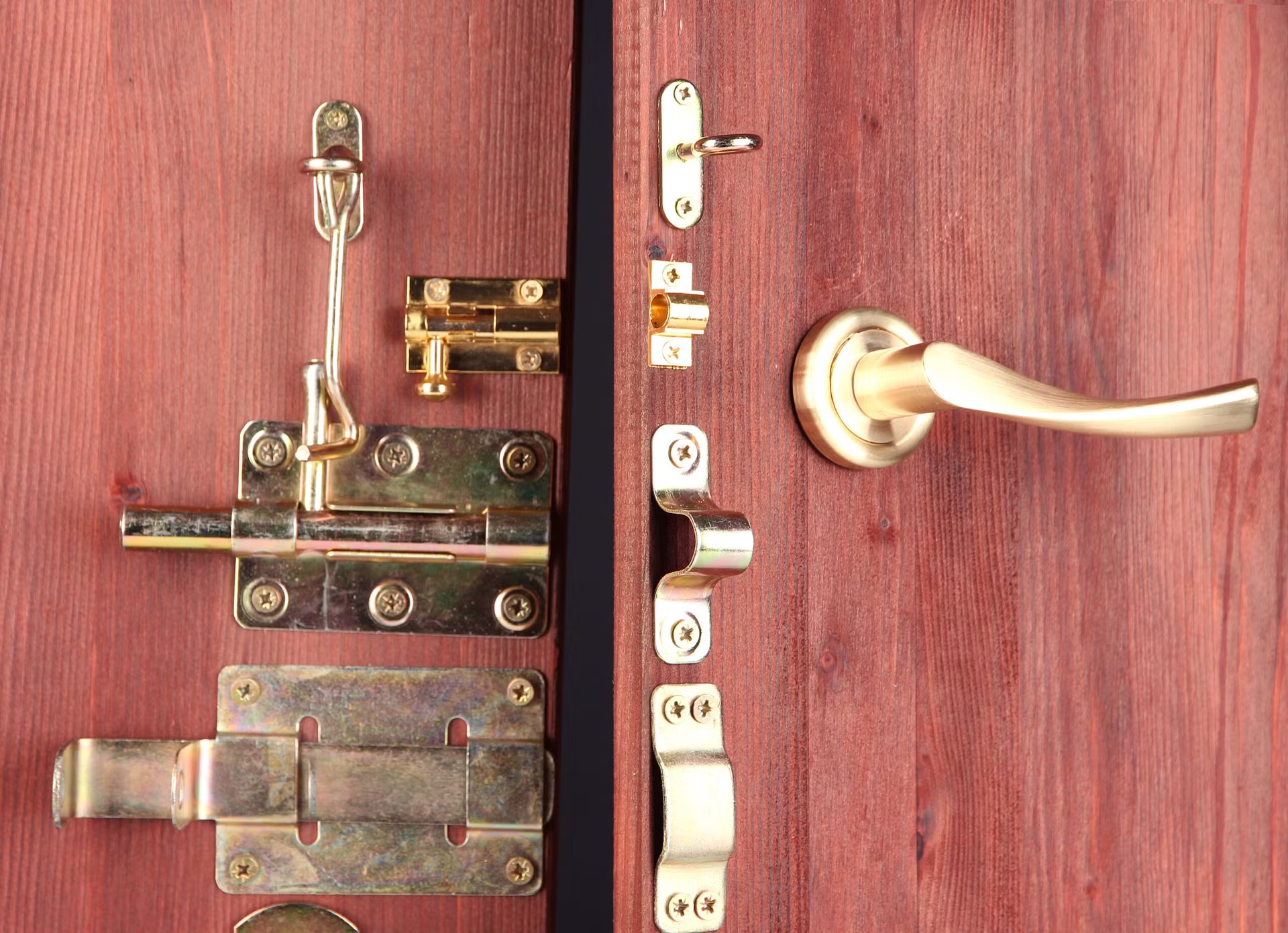
A latch may seem like a small and ordinary item, but it plays an extraordinary role in everyday life. Found on doors, gates, cupboards, and even inside digital circuits, the latch is an essential component of security, function, and design. From the rustic Suffolk latch on an old cottage gate to the modern Yale night latch securing a London flat, this humble device has stood the test of time.
Across the UK, the use of a latch goes far beyond simple fastening. Homeowners rely on a door latch or tubular latch for daily convenience, while IT professionals may reference Azure latch codes when working with secure systems. In the creative world, latch hook kits provide a hands-on craft that transforms yarn into art. The versatility of the latch makes it far more than just a piece of metal—it is a vital part of life, history, and technology.
Latch definition and meaning
At its most basic level, a latch is a fastening device designed to hold an object, such as a door or gate, in a closed position until deliberately released. Unlike a lock, which often requires a key, a latch can be operated simply by lifting or turning a mechanism. This makes it quick and practical for frequent use, yet it still provides essential security.
In electronics, the latch has a very different meaning. Instead of a physical fastener, it refers to a digital circuit that retains its state until changed by another signal. These electronic latches are critical in computing, memory storage, and data processing. Whether mechanical or electronic, the underlying principle of a latch remains the same: to hold, secure, or retain.
Types of latches for doors and gates
The door latch is one of the most common forms, with several variations suited to different purposes. A tubular latch is often fitted inside internal doors where security is less of a concern, offering smooth operation when paired with a lever handle. A mortice latch, on the other hand, is recessed into the body of the door and provides a stronger and more durable solution. Many homeowners also choose a door latch lock or a door lock latch for added peace of mind.
When it comes to gates, the garden gate latch is a reliable classic. A Suffolk latch is especially popular for period homes and traditional cottages, providing both function and aesthetic charm. This style of latch has been in use for centuries across the UK countryside. Another simple option is the hook and eye latch, perfect for lightweight gates, cabinets, or even windows, where ease of use matters more than heavy-duty security.
Night latches hold a special place in British households. A Yale night latch is one of the most recognised types, automatically locking when the door closes. This makes it extremely convenient but also raises questions about security. While a night latch alone may not provide maximum protection, combining it with a deadbolt or additional lock can significantly strengthen a door.
Specialty suppliers such as the Suffolk Latch Company offer a wide variety of styles, from antique reproductions to modern finishes. These latches are not only functional but also decorative, appealing to those who value craftsmanship as much as security. Whether you choose a garden gate latch or a Yale night latch, the variety available ensures there is a latch for every purpose.
Latches in electronics and technology

In digital electronics, a latch is a fundamental building block. It stores information temporarily, allowing circuits to remember input until an external signal resets them. Types of latches in this category include SR, D, JK, and T latches, each serving a specific purpose in computing and control systems. Without them, modern devices would struggle to perform tasks that rely on memory and timing.
Azure latch codes represent another technological application. Associated with Microsoft’s Azure platform, these codes enhance digital security and access management. Codes for Azure latch provide IT professionals with a way to handle authentication and streamline secure processes. While far removed from a mechanical door latch, the principle of control and security is still at the heart of its function.
Latch in crafts and DIY
Latch hook kits bring a creative spin to the idea of latches. Instead of fastening doors or securing circuits, latch hooks are used in crafting projects to lock strands of yarn into a canvas. This technique produces beautiful rugs, wall hangings, and other decorative items. It is a rewarding pastime enjoyed by people of all ages across the UK.
The latch hook process echoes the essence of a traditional latch—holding something firmly in place. With latch hook kits, the yarn is held securely to form colourful designs that stand the test of time. It’s proof that the latch is not limited to mechanics or electronics but also finds a place in hobbies and personal expression.
Choosing the right latch
Selecting the right latch depends on where it will be used. For interior doors, a tubular latch offers practicality, while a mortice latch provides strength for more demanding applications. If the goal is outdoor security, a garden gate latch or a Suffolk latch is often the ideal solution. For front doors, many people combine a Yale night latch with a stronger deadbolt for maximum protection.
When comparing a latch lock with other security measures, convenience is a major factor. A latch lock is easy to operate and works well for doors that are frequently used. However, for higher-risk areas, combining it with additional locking mechanisms ensures greater peace of mind. Choosing carefully ensures your latch serves both function and safety.
Installation and maintenance
Fitting a latch is usually straightforward, whether it’s a tubular latch for an internal door or a Suffolk latch on a garden gate. Clear instructions often accompany these products, making it a suitable DIY project for homeowners. For more complex options like a Yale night latch or a mortice latch, professional installation may be worth considering to ensure long-term reliability.
Maintenance is just as important as installation. Regular cleaning and lubrication prevent wear and keep the latch working smoothly. Outdoor latches such as a garden gate latch or hook and eye latch require extra care to protect against rust. In some cases, replacing an old latch may be more cost-effective than repairing it, especially if the mechanism has become unreliable.
Conclusion
The latch is a small yet powerful invention that touches many aspects of our lives. From the traditional Suffolk latch on a countryside gate to the electronic latch in a computer system, its applications are wide-ranging and deeply practical. It provides safety, convenience, and even creativity through latch hook kits.
In the modern world, choosing the right latch—whether a Yale night latch for a front door, a tubular latch for an internal door, or Azure latch codes for IT systems—is about understanding both purpose and function. Appreciating the humble latch reminds us that sometimes, the simplest devices can make the biggest difference.
FAQs about latches
- What is the difference between a latch and a lock?
- Is a night latch secure for a front door?
- How do I choose between a tubular latch and a mortice latch?
- What are Azure latch codes used for?
- How does a Suffolk latch differ from a garden gate latch?
- Can I replace a door latch without changing the handle?
- What is the difference between latch hook and latch fasteners?
- Is a Yale night latch suitable for wooden doors?
- How do I maintain a metal latch to prevent rust?
- Are latch hook kits suitable for beginners in crafting?
You may also read: Brass Door Knobs – Antique, Vintage & Modern Door Handles UK






